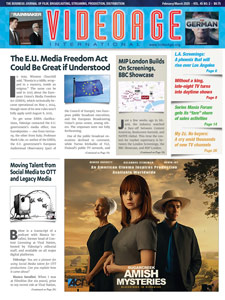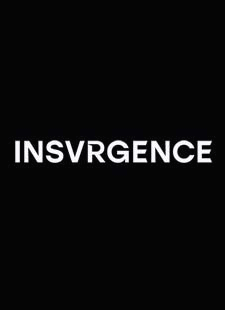By Dom Serafini
The news is still reverberating around the world as a sort of Shakespearean Comedy of Errors seems to be coming to life. Discovery is paying AT&T $43 billion to purchase 29 percent of WarnerMedia. Discovery’s CEO, Davis Zaslav, is set to run the combined group — which some are speculating will be called WarnerDiscovery (as DiscoverWarner would sound too comical). The new entity will take over $55 billion of WarnerMedia’s debt. AT&T will retain 71 percent of the yet-to-be-named combined group.
I remember visiting the Discovery Channel’s Bethesda, Maryland headquarters during its early years, in 1985, and meeting with its founder John Hendricks. (The company’s HQ later moved seven kilometers east, to Silver Spring). It was a great company for a TV trade publication to join forces with before it became Discovery Communications in 1994 (and a public company in 2008).
Scripps Networks, with its New York City base, was also a great company to work with. At one point in 2018, Discovery, by then a very bureaucratic company with a mishmash of niche channels, took over Scripps for $14.6 billion, and like magic the combined company seemed to disappear from TV trade shows. Nonetheless, it continued to increase its reach worldwide with its unscripted, lifestyle, and reality channels.
Warner Bros. was also a great company to collaborate with before it became AOL Time Warner in 2000, and subsequently WarnerMedia. In 2010, Jeff Bewkes, who became Time Warner’s CEO in 2007, described the merger with AOL as “the biggest mistake in corporate history.” It’s sufficient to say that two years after the merger, AOL Time Warner reported losses of $98 billion. In 2009, AOL was spun off into its own company. It floundered, and in 2015 was bought by Verizon, a Telco, for $4.4 billion. Verizon didn’t know what to do with it either, though, and on May 3, 2021 it sold it together with Yahoo (which Verizon had purchased for $4.5 billion in 2017) to the private equity firm, Apollo Global Management, for a total of $5 billion.
Telco giant AT&T was also once a great company. At one time American retirees like my aunt Yole stashed their savings in their stocks to get fantastic dividends. Then, thanks to “relaxed” regulations, Wall Street took over Main Street and C people stopped being relaxed in their C suites and became agitated about improbable multibillion dollar financial deals like the $182 billion AOL takeover of Time Warner.
Not to be a lesser loser, in 2015, AT&T acquired DirecTV for $67.1 billion. And while their executives had the knowhow to run communications satellites and direct-to-consumer services, no one had any idea how to deal with Hollywood or how to program channels with TV shows. After unloading 30 percent ownership of DirecTV for $7.6 billion last February to TGP, a private-equity group, AT&T CEO John Stankey basically admitted that its acquisition was a mistake. Indeed, for AT&T, DirecTV’s acquisition is now valued at $25.3 billion, with a loss of $41.8 billion.
At this point, we had two companies — AT&T and TimeWarner — each with a big financial mistake, so what better solution could they come up with than to combine their mistakes with a $109 billion deal creating WarnerMedia in 2018?
Like Julia Roberts said in the 1990 movie Pretty Woman, it was a “big mistake.” So implied AT&T CEO Stankey.
Then, on Sunday, May 16, Discovery’s 61-year-old Zaslav, an affable CEO and a former NBCUni executive who joined Discovery in 2007, who even answered this reporter’s (non business-related) e-mail at 9:03 p.m. (and starts working at 4 a.m.), and who likes to play golf to relax, officially came to the rescue with a joint announcement with AT&T’s Stankey about the merger. Promptly, Discovery’s board rewarded Zaslav by extending his contract for four years, from 2023 to 2027. (His compensation was $37.7 million in 2020.) Ironically, the joint announcement came a day after WarnerMedia CEO Jason Kilar’s interview in The Wall Street Journal, in which he gave a stellar review of AT&T’s strategy for the media group. Perhaps, at 50 years old, Kilar is too young to remember how Spain’s Telefonica, another Telco, failed when it took over media companies that included Argentina’s Telefe. As even Bloomberg recently reported, “media and telecoms don’t mix.”
Meanwhile, AT&T is expecting to cut its annual dividends by up to 50 percent and Zaslav is planning to reduce the redundancy in the combined company. This is on top of the 2,000 people that were let go at WarnerMedia by AT&T, including experienced executives, which prompted criticism by AT&T investor Elliott Management, a hedge fund.
So what could the future hold for the merged WarnerMedia-Discovery? One logical conclusion is that Zaslav will position the new group for a new sale, this time to a market-capitalized company such as Netflix, which could re-invent itself by exploiting its vast (and mostly little watched) library across a multitude of TV channels, and get a much-needed production studio, as well as an additional large content library so that it can compete head-to-head with Disney.
Pictured above, Zaslav and VideoAge‘s Dom Serafini in Cannes at MIPCOM 2017.












IT’S A RARE PHOTO – IT DOESN’T HAPPEN EVERYDAY TO SEE DOM WEARING A JACKET! 🙂 Ciao, Marco